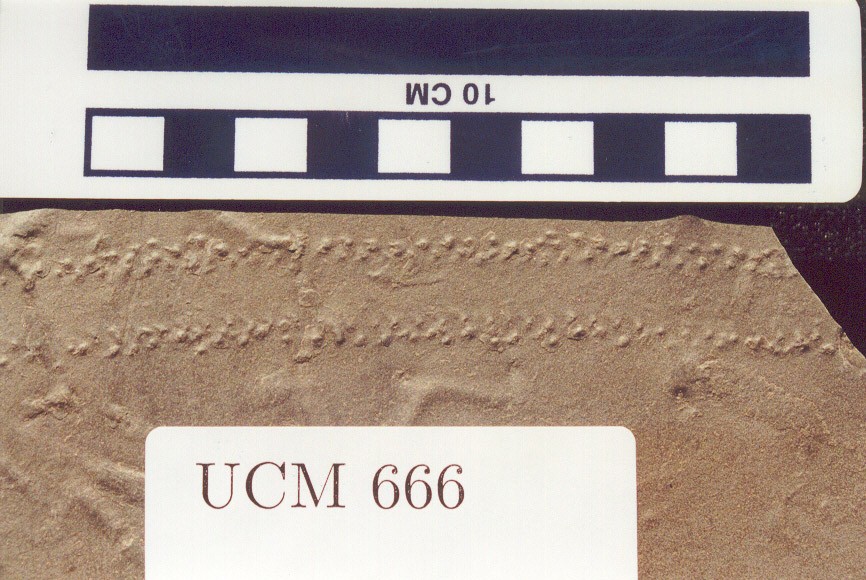| Figure 1: Trackway of a likely arthropod. Each print
is a small spot. |
When
we arrived at
the site, only one small area was not reclaimed. This particular area
was one which had yielded many good tracks in the past and so we were
all delighted to see that the mine workers had moved some of the old
rock piles around, allowing us to see if any new material had been
exposed. In spite of this, we all had difficulty finding any new high
quality tracks. Nevertheless, there were still tracks to be found. I
found the interesting specimen shown in Figure 1. It appears to be the
trackway of an arthropod, where each track is a small roundish spot. In
the significant collection of track photos which the BPS "track meets"
have provided, I had not seen another set like this one. I also found
the tracks shown in Figures 2 and 3. |
| |
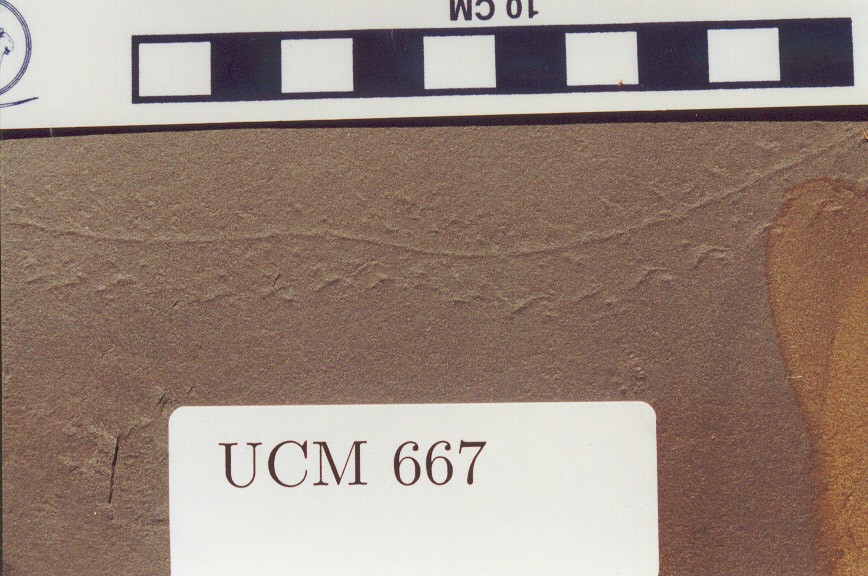 |
| Figure
2: Trackway of
another likely arthropod, notable for its asymmetry and strong
trail-dragging mark |
|
| |
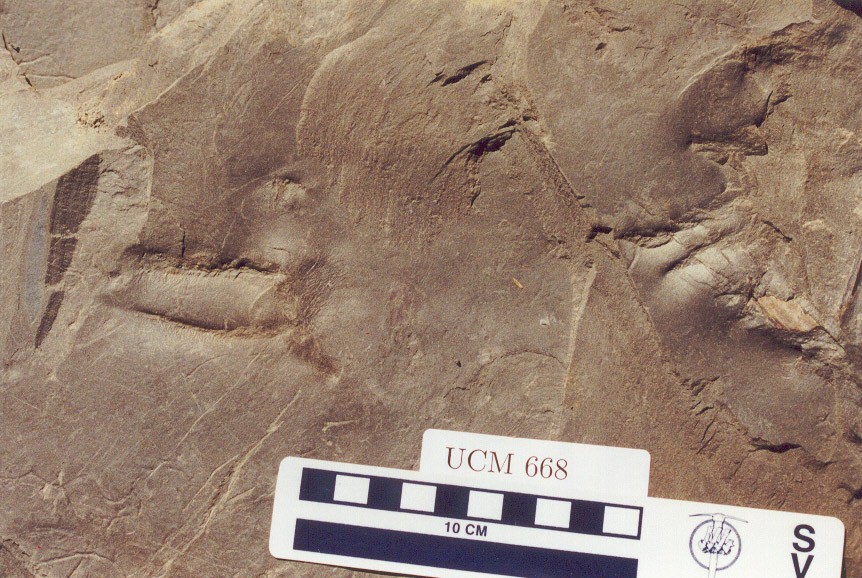 |
| Figure
3: Two tracks of an
Attenosaurus subulensis,
a common
alligator-like amphibian from the Union Chapel site. |
|
| |
| On the
reclaimed
areas and in the overturned area, one can still find nice plant fossils
at this site. Figure 4 shows an especially nice set of ferns from a
split rock. Most interesting is how strong the stem of these ferns
is.
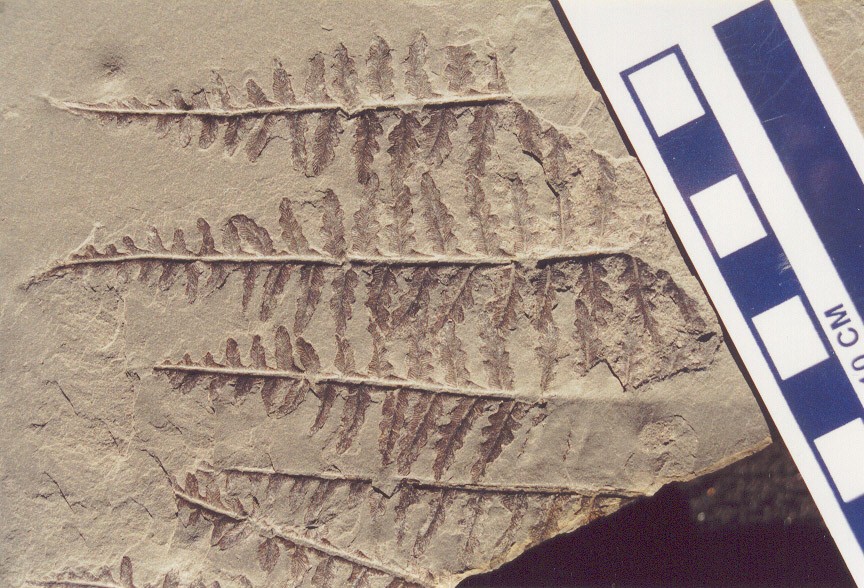 | Figure
4: Strong fern impressions
from a split rock. |
|
|
| |
Figure
5 shows brown
ferns of the genus Neuropteris, which was common at this mine.
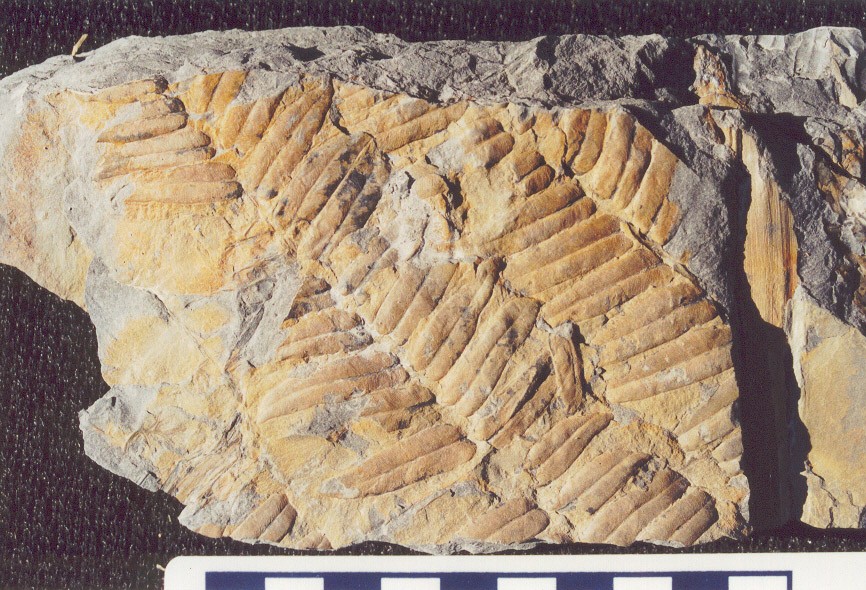 | Figure
5: Beautiful Neuropteris
ferns defined by iron compound deposits. |
|
|
| |
Figure 6 shows a
single large seed impression of a seed fern. This is how such seeds are
often found.
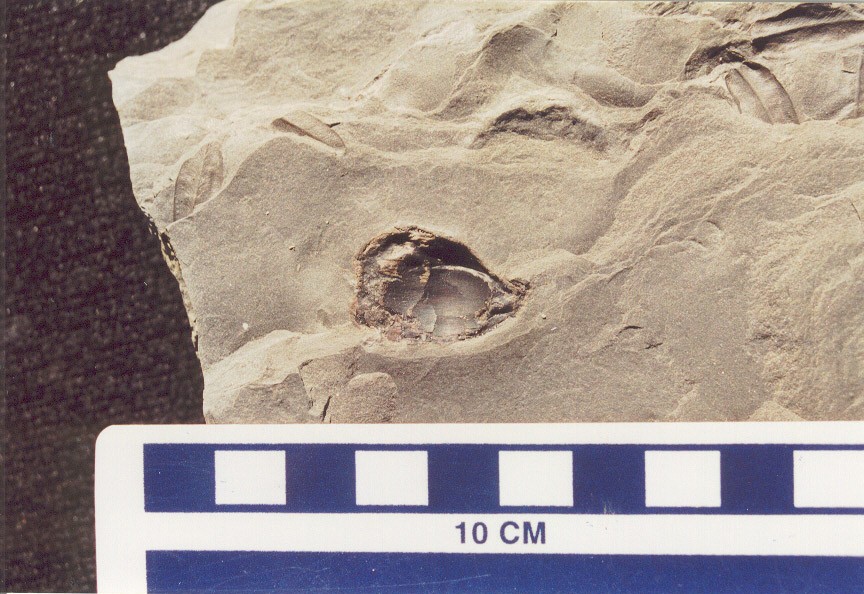 | Figure
6: A seed impression,
Trigonocarpus. |
|
|
| |
However, I found
another rock in the overturned area having more than a dozen seed
impressions. Several of these are shown in Figure 7.
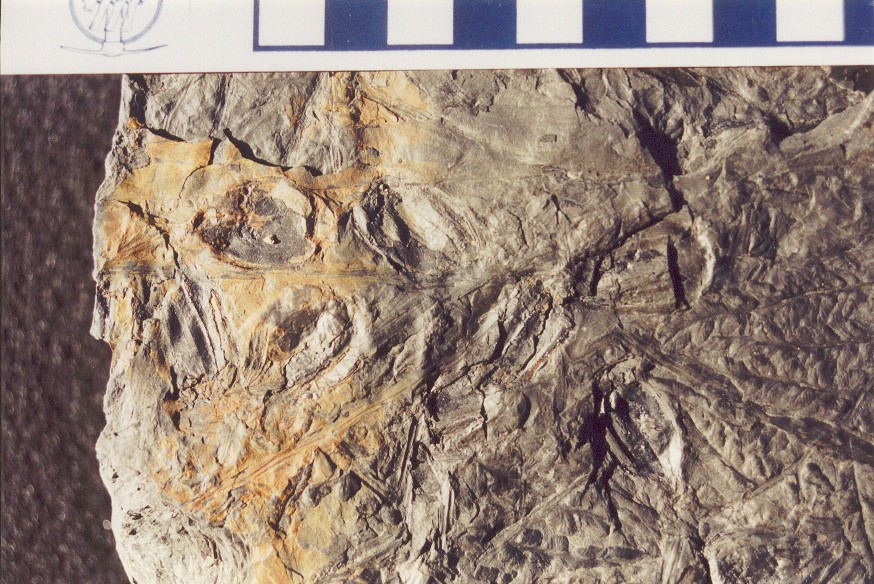 | Figure
7: Part of a slab showing
numerous seed impressions |
|
|
| |
The ferns they are
associated with are shown in Figure 8. Jim Lacefield discusses the
seeds of seed ferns on page 66 of his new book, "Lost Worlds in Alabama
Rocks", and gives a wonderful general discussion of the Coal Age in
Alabama and what happened to the seed ferns.
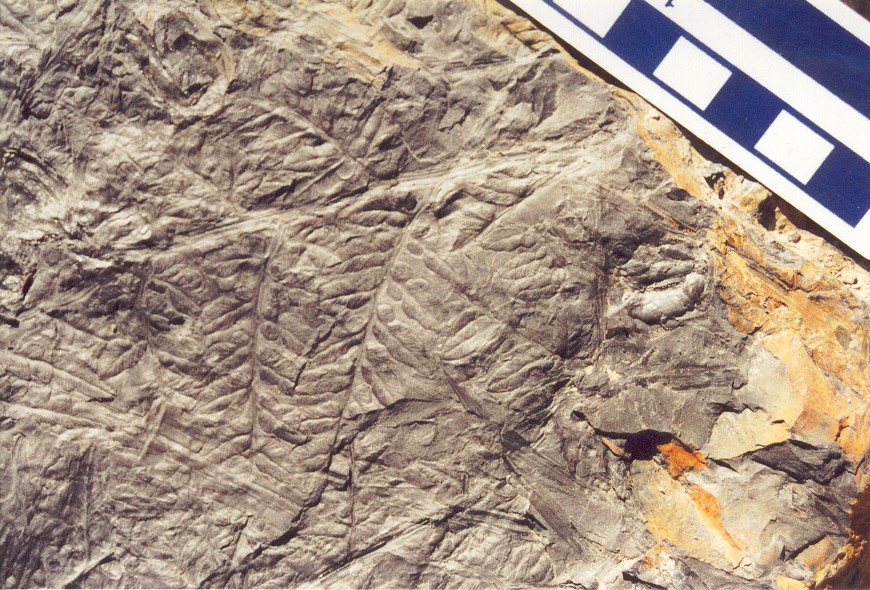 | Figure
8: Part of the same slab
showing another seed impression among the ferns likely associated with
the seeds |
|
|

